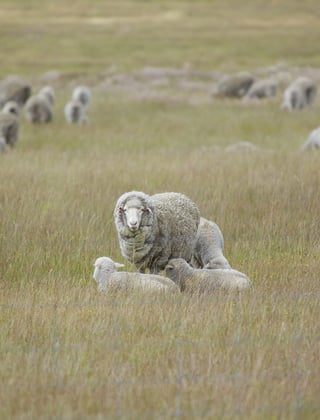Welcome to Australian Wool Innovation, a hub for the woolgrowers of Australia.
Not a woolgrower? Looking for information about wool products, wool care or wool processing?
The Woolmark Company is the global authority on wool. Visit Woolmark.com instead.
Parasite management plans. Write it down, to get it right!

Writing an annual parasite control plan for your farm helps to ensure best practice parasite control. The plan should cover the important events for worms, flies and lice and include your policies (your approach) on quarantine practices, monitoring, when drench checks will be done, and which year you will do the more comprehensive drench resistance tests.
Writing an annual parasite control plan for your farm helps to ensure best practice parasite control. The plan should cover the important events for worms, flies and lice and include your policies (your approach) on quarantine practices, monitoring, when drench checks will be done, and which year you will do the more comprehensive drench resistance tests.
BENEFITS OF HAVING A PLAN IN WRITING
- It is there for anyone you choose to look at and to comment on. It can be discussed with your advisor to ensure it is correct, your reseller can be made aware of your order requirements in advance and workers know what’s coming up and can make their contribution.
- It ensures better timing. There’s a saying that the difference between a good farmer and a bad farmer is that the good farmer does things at the right time. Critical events, such as the first summer drench, pre-lambing drench or when to wean, are all crucial to a good parasite management plan. Certainly, practices such as the first summer drench may change their date from year to year dependent on the season, but if it’s in there on the first possible date then you will be reminded.
- A plan is making a commitment, one that you have researched and thought about. It prioritises the stock, which can then be weighed up against other priorities on the farm. It is also a good budgeting tool and enables you to see when you will have financial commitments for purchasing product and labour.
- Nobody’s memory is perfect, so a written plan creates a reminder of when things should be done and a record of events. You can record the dates, products used, class of animal and mob, which amongst other things, is useful for re-handling periods, WHP and ESIs. Keeping a record of product used enables you to consider the use of rotation in limiting resistance development.
- Most of all, a written plan put into your calendar can help motivate you to keep on track with the required tasks in a timely way.
TIPS TO GET STARTED
- Find a prominent place that you see every day, where the whole year calendar can be displayed while you build your plan: a wall calendar, whiteboard or even a wall with some sticky notes.
- Start with just 5 minutes: add the obvious things that come to mind and revisit for just a few minutes each day – you’ll have a plan in no time, with the benefit of thinking time in the process and without being put off by the task.
- Let others help build it: all those who are involved in managing the sheep can be asked to add to it – this will also encourage buy-in and discussion from the whole team.
- Just jot a few dot points for your policies and attach them to the plan, or print out some key ParaBoss information and attach it to the wall, such as quarantine drenching protocols.
- For the tech-savvy, add dates with reminders to your electronic calendars – the old-school people can keep looking at the wall calendar!
This article appeared in the March 2020 edition of AWI’s Beyond the Bale magazine. Reproduction of the article is encouraged, however prior permission must be obtained from the Editor.
Articles That Might Interest You
Parasite Management
Flies, Lice and Worms are a major concern for woolgrowers. We have developed tools for woolgrowers to manage these risks.
Read more
Insecticide Resistance
Tools that ensure insecticides are used to best manage blowflies and/or lice on Australian sheep flocks.
Read more
Breeding and Selection for Flystrike Resistance
Breeding for more flystrike resistant sheep plays a critical role in controlling flystrike in non-mulesed flocks as well as reducing the risk of flystrike in mulesed sheep.
Read more















